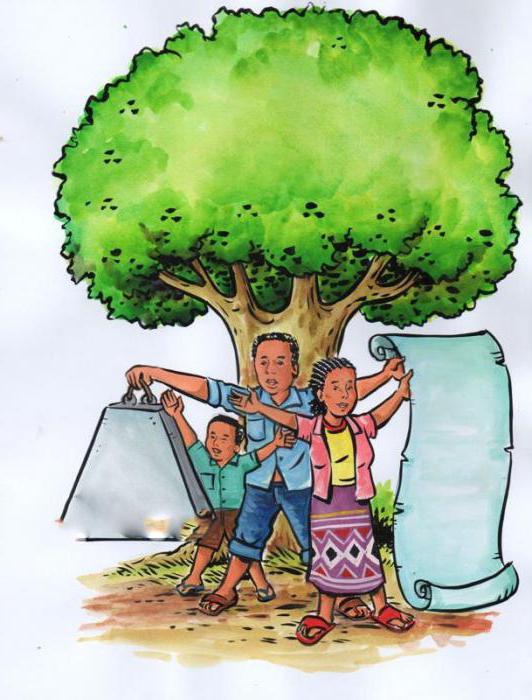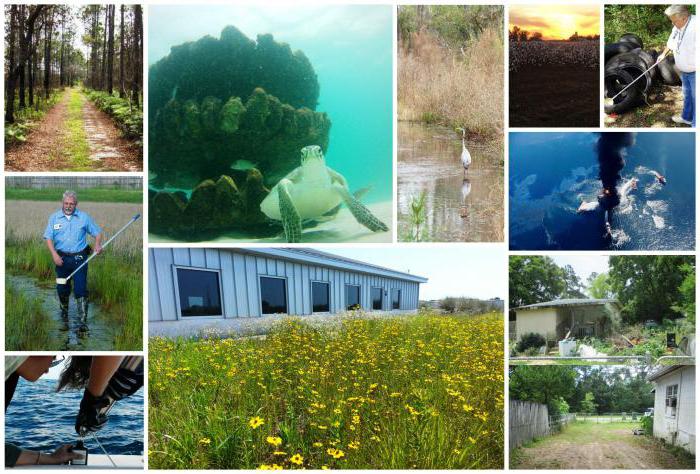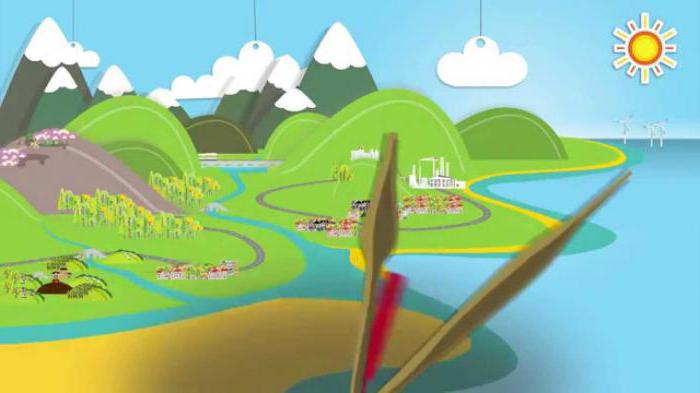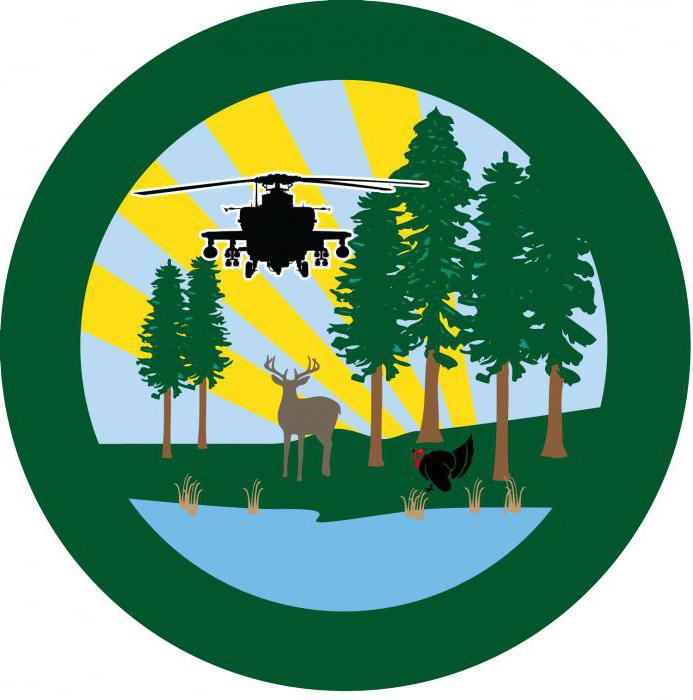Objects of nature management and environmental protection are the resources of the natural world around us. This includes not only individual objects, but also interconnected complexes. Individualized sites are considered objects. Allocation is carried out in practice (that is, material boundaries), as well as in legal law. That is, each site is separated from the rest, delimited, can be personified. The concept of an object of nature management includes land, water, air, reserves, as well as individual specimens - plants, animals.

Legal regulations
Subjects and objects of environmental management are considered in legal law. This science defines the terms and delimits their use in practice, as well as formulates the standards that govern the use of land and natural resources.
Individualization from a legal point of view is achieved by a decision by an authorized body. To confirm this fact, documents are issued according to the model established by the decisions of the Government of the country. The documentation certifies that its owner has the right to use a certain object. It must be remembered that the objects of nature management are sites, complexes, including those protected by law. For example, it is necessary to obtain a license in order to conduct geological exploration of territories or gain access to special water use.
Physical distinction
This concept is discussed when they draw up schemes, projects, plans of sites and nature management objects. They prescribe the features of using a land plot, bowels of the earth, forest, water. In this case, use in kind is considered. To separate the selected site from the surrounding land, a variety of signs are used. It can be boundary symbols or accepted among surveyors. In order to delimit objects of environmental management rights, they establish pillars, set coordinates, or arrange for binding to the relief.
In the air, the individualization of the site is organized through the proximity of highways, corridors. If there are none, determine which air sections are used to separate the selected object of environmental management rights from neighboring territories.
Special occasions
In some cases, you can get access to special types of natural resources: animals, plants. It is given through permission, the receipt of which must be justified. Individualization to such objects is not done. So, if some person wants to harvest medicinal herbs, then he gets permission for this task. That is, it becomes possible to harvest as a whole, rather than a separate variety. The situation with obtaining a license for hunting animals is similar. The license does not spell out on which individuals, representatives of the animal kingdom this permission was issued.

But the acquisition of natural resources from the personified category is possible when a particular territory has an important feature that distinguishes it from other similar ones. It can be a name or another parameter. Examples: a reserve so-and-so, forest so-and-so, oak such-and-such. Old sick animals are also classified in this category: they indicate that a sick wolf is to be shot (a method of selection and maintenance of a normal ecological situation in the area).
We use correctly
The objects of general environmental management law with regard to soil and water are various linear-planar sections.This does not include fresh water flowing underground, as they are ranked as components of the subsoil and are considered minerals.
The objects of general environmental management with regard to soil and air are linear-volumetric sections. Forest is measured spatially, linearly and volumetricly at once. But as applied to animals and plants, nature management objects are individuals.
If we are talking about complexes, then these are usually areas that are used for several purposes at once. Usually it is leisure, tourism, economic use, a platform for scientific research. In addition, complexes are called reserves, nature reserves, national parks.
Subjects and objects of environmental rights
Objects are elements, components of the wild world around us. Some of them are in the public domain, others are excluded from circulation by the decision of the country's authorities. There are those that are not regulated by legal norms. The most striking example is solar energy, moisture in the atmosphere.

But the subjects - this is the state, individual authorities, organizations, enterprises. Subjects and objects of environmental management law are closely related to legal standards. The subjects may even be individual people, including those without citizenship. Organizations can be of very different kinds: from religious to industrial, both domestic and foreign.
Terminology: it is important
How to name the subject? This is directly determined by what the nature management object is in his possession. Having a forest plot, a person becomes a forest user, and having water in his possession becomes a water user. You can acquire the status of subsoil user.
Natural resources can be used for a variety of purposes, and this diversity has become the basis for the introduction of numerous norms in the legislation of the country. All subjects of law have a specific legal capacity - they are able to exercise subjective law, coupled with obligations. Rights and obligations of a general sense are characteristic of those who only indirectly interact with the concept of an object of environmental management, but when working directly, a special license is needed that gives specific, broader rights.
State and nature management
In our country, the protection and control of natural resources are implemented at the state level. The main task of such a system is to harmonize the interests of ecology and economics. At the same time, they take into account that there are public interests with a certain hierarchy. In the first place are federal, then regions, local ones. But there is a horizontal division of interests - territories, departments, enterprises, characteristic of each level of the described hierarchy.
It is traditionally believed that environmental protection is not worth it to allocate it to specialized activities. This is only a subtask of those involved in environmental management. At the same time, any non-economic, economic activity implies management, that is, the impact on the object of environmental management. The task of the subject of environmental management is to transfer the object to a new state or save it in the same.
State hierarchy and nature around us
Responsibility for the management of natural resources rests with the authorities of general competence, as well as specially designated bodies. In addition, a certain responsibility on managers from the municipality. At the level of individual companies and organizations, nature management is the responsibility of services and officials. Of course, each organization has its own organizational characteristics, but the methods as a whole are common throughout the country. One of the main ones is economic, which involves obtaining benefits through those natural resources for which the legal entity was able to obtain a license.

The state bodies with the corresponding rights are the president of the country, the Federal Assembly and the government. In addition, executive, representative bodies of the regions have certain opportunities. Institutions, municipalities are called upon to protect nature, to solve additional issues.
Special authorities
It is customary to include those that are mentioned in legal acts issued by the government, that is, those that are entrusted with the functions of protecting nature. There are complex, responsible for individual industries, functional. Local government officials work in accordance with the charter of a specific authority.
Ownership, rights and use
Users can manage natural resources based on the fact that they own some areas. The property may be private, maybe communal. The legal status obliges the owner to use resources in the entire possession or to transfer these sites for use to other persons. Allocate agricultural, non-agricultural objects. Some run their businesses specializing in fish, hunting, forest, and other industries.
The system of classification of legal entities is rather complicated. Take into account not only the area of activity, but also the format (individual, legal entity), features of the operated facilities. The user can be a citizen or a group of citizens. Nowadays, the laws governing this area have not yet been worked out to the necessary extent.
Rights: where and where?
The right to use objects cannot appear literally from nothing. That is, first you need to get some land into your ownership, and already after this there is an opportunity to exercise the right to use natural resources. Closely related to this is the legal capacity to work.

The environmental legal capacity of enterprises is a separate matter. It is quite different in its essence from the environmental legal capacity of the authorities, called to manage the objects of nature on behalf of the authorities of the country. This is due to the fact that the powers of state authorities come from their competence, formed at the state level by laws and regulatory legal acts. It should be remembered that it is the state that owns the predominant volume of natural resources.
Environmental capacity
This term refers to the ability to receive, exercise rights, obligations related to aspects of the use of natural resources. For a legal entity, such a term is not very important, since one who is environmentally sound at the same time has legal capacity. Hence the concept of “legal capacity”. This is characteristic of organizations legally correctly registered, that is, a person. But the branch, structural unit, team, workshop do not have legal capacity, as they are not independent. Therefore, such “small fry” are not considered subjects of law.
Those persons who are inherent in legal capacity are considered subjects of law as soon as they receive at their disposal a natural object and draw it up in the prescribed manner. True, in some cases, registration is not necessary, then legal capacity appears at the moment when they begin to use the territory. An example is shared roads.
Environmental legal capacity: features of the issue
With regard to individual citizens of our country, this feature appears at the moment when a person is born, and disappears only at the time of death. All citizens of the country have the same environmental legal capacity. Neither the position in society, nor belonging to a certain gender or race, nor origin, income level, have any effect.
The concepts of “environmental legal capacity” and “obtaining an object for use” should not be confused. The second is subjective law. It occurs when there is legal capacity.Regarding individual citizens of the country, the most important is the phenomenon of environmental competence, that is, a person commits some actions that provoke legal consequences. To do the right thing, you need to have experience, knowledge of legal norms, and also be able to assess the consequences of the actions taken. Civil and environmental capacity is characteristic of citizens of the country in different volumes. The laws governing this area do not have clearly formulated norms that determine legal capacity, therefore, when a dispute arises, it is necessary to analyze legal norms and proceed from this. So, land capacity is peculiar only to those who have reached 18 years of age, or 16 if they are involved in farming. True, there are currently no other clarifications regarding any categories of citizens in the land legislation.
And the neighbors?
If you pay attention to existing laws governing other areas of environmental management, you will notice that there are very few exact standards. Moreover, if the law is dedicated to the body managing a certain object, then there is practically no difference between it and the user. If there is a certain state-owned enterprise, for example, dealing with forest, then it is considered to be the body managing this zone. By law, he is vested with the right to use the territory in accordance with the approved standards.

Environmental rights: we protect what is
It is impossible to overestimate the importance of regulating the rights and opportunities in the field of the use of natural resources. It is important to remember that nature management is not a tool to satisfy people's needs, but a factor of negative impact on the world around us.
Man uses resources in his own interests. Someone makes money on this, others rest or use nature for spiritual needs. In many ways, this is regulated by the existing rights collected in a system designed to regulate the use of the wealth of the world. There is natural resource legislation whose task is to regulate how space is exploited. Additionally, a federal law on environmental protection was adopted. Separate norms can be extracted from legal acts indirectly related to the protection of nature.
Legal component
The right to use natural resources is an institution of law, at the same time, legal relations and even the powers of individual persons. The standards adopted to regulate this sphere are a complex of the institute of law. The right to use natural resources is not only rights, but also the duties associated with them, governing the particularities of the application of certain areas in practice.
Existing laws, and with them ecology as a science, have introduced a system for classifying the uses of natural resources. The simplest option of dividing into groups, already mentioned above, is based on the definition of the used object. That is, they talk about the use of land, water, air, forest, mineral resources, animals and plants.

At the same time, legal literature contains almost no mention of air use regulations. This area is defined to a much lesser extent than the rest, although the problem of protecting the purity of the atmosphere from year to year is becoming more urgent. In 1982, the first law on air was issued, it was replaced by a more modern federal law that defines the use of the atmosphere as pollution by its emissions.
And how else to share?
An alternative widely used classification system involves division based on the purpose of the resource. That is, the specifics of the used resource and those needs that are satisfied through it are taken into account.Particularly complete information about this is contained in the Land Code, which mentions lands allotted for settlements, for agriculture, specially protected, used by industry, transport and other enterprises, as well as allotted for forest, water resources and stored in reserve.
Land resources are divided into residential, public, industrial, transport, for recreation, for agriculture, special, military and all others. All of these species can be within the same settlement. The distinction is based on urban planning documentation.
But the bowels are used by geologists, miners, builders. From the water code it follows that there are resources for the extraction of drinking water and liquid for domestic needs, there are facilities for drainage, wastewater, as well as used for energy production, wood alloy, treatment, recreation, health improvement. There are reservoirs for fishing, using vehicles, and exploration of minerals important for civilization. Finally, firemen stand out. All of the above are various nature management objects.